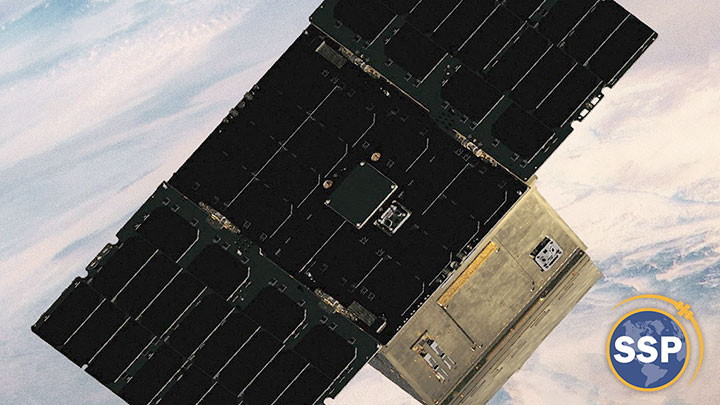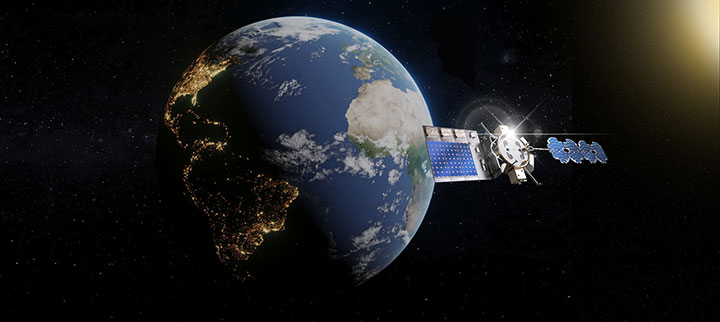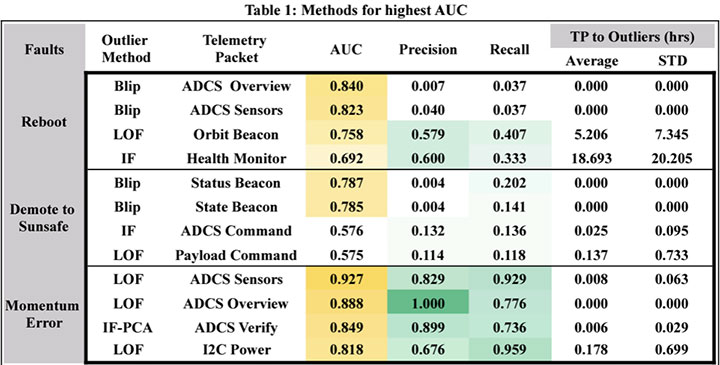ALEXANDRIA, Va. — A satellite is a terrible thing to lose. Even with rigorous flight testing, the success of a mission can still be jeopardized by communication disruptions, sensor failures and other unexpected breakdowns of onboard systems.
 The Air Force Research Lab Space Directorate is prioritizing research into smallsat autonomy. Image shows a depiction of Arachne, an AFRL demonstration project. (Source: AFRL)
The Air Force Research Lab Space Directorate is prioritizing research into smallsat autonomy. Image shows a depiction of Arachne, an AFRL demonstration project. (Source: AFRL)
As commercial and government stakeholders work to develop autonomous solutions for spacecraft, part of that effort involves developing predictive methods for satellites to detect, communicate and eventually self-remedy faults before they become critical.
“Autonomy is increasingly becoming a key aspect of space operations moving forward and, as such, is a key research area for the Air Force Research Laboratory Space Vehicles Directorate,” Air Force Research Lab (AFRL) Tracker Experiment Principal Investigator Alex Sizemore said in a statement to Constellations.
Research being done today by students and staff within the directorate will feed the evolving needs of the U.S. Space Force as it seeks to effectively manage complex, proliferated constellations of small satellites with a small number of human operators. Autonomy will also play a significant role in enabling communication beyond GEO, as governments begin building more infrastructure in cislunar orbit.
Taking on the Challenge
Joseph Melville is a SMART Scholarship recipient at the University of Florida whose primary area of research is physics informed machine learning. Working with the AFRL Space Vehicle Directorate’s Small Satellite Portfolio, he recently developed a model to help identify and potentially mitigate faults that can lead to onboard satellite failures before they occur.
“When something goes wrong right now, [satellite operators] only find out when the satellite is not doing what they expected it to do,” Melville told Constellations.
Because onboard faults are so difficult to predict, there is very little effort now to prevent these issues, he continued. “This was an effort to see if there were features in the [telemetry] data that could predict faults that were going to occur in the future, so we could capture those and respond before we lost contact.”
Satellites have become more reliable in recent years, but around 5% fail or partially fail before completing their missions. Some of the more common points of failure include communications payloads, attitude and orbit control systems, computers, power systems and data handling components. Space phenomena, like solar flares, also account for on-orbit failures.
 The ability to detect faults before they occur can help operators prevent serious onboard issues and extend the life of the satellite. (Source: AFRL)
The ability to detect faults before they occur can help operators prevent serious onboard issues and extend the life of the satellite. (Source: AFRL)
These failures typically come as a surprise to the operator. Often, without warning, the operator loses communication with the satellite, can only receive blips of data or discovers the spacecraft is tumbling. This prompts an exhaustive troubleshooting process on the ground that relies on limited, incomplete data received from the spacecraft and only brief windows of time to send commands and test fixes. Essentially, a worst-case scenario for a software engineer.
Being able to predict these types of events before they occur is a form of autonomy that can allow operators, or eventually systems, to respond to minor issues before they spiral into serious failure.
“If you want to build autonomy into your systems, you need a way for them to check up on themselves,” Melville said. Describing his method for onboard fault prediction, he continued, “This could be a way to extend life or make sure the satellite is doing what you expect it to do more often during its life.”
Military, Deep Space and Commercial Applications
While developed in partnership with the AFRL, this approach to autonomous onboard systems monitoring could be used for commercial satellites as well as military missions and deep space exploration. Autonomous fault detection is highly desirable in uncertain conditions when immediate communication between the operator and the spacecraft is not guaranteed. This includes deep space exploration and adversarial conditions, when response times must be immediate and occur without operator intervention.
 Table shows predictiveness of observable data anomalies and how they correspond to onboard faults. (Source: Joseph Melville, “Methods for Data-centric Small Satellite Anomaly Detection and Fault Prediction”)
Table shows predictiveness of observable data anomalies and how they correspond to onboard faults. (Source: Joseph Melville, “Methods for Data-centric Small Satellite Anomaly Detection and Fault Prediction”)
These are times when operators need a system to perform as expected “without holding its hand the whole time,” Melville explained.
Using a record of raw telemetry data gathered from one of AFRL’s smallsats, Melville identified a method for correlating data anomalies with timestamped fault events. The faults included reboots, momentum errors or unexpectedly entering safe mode. He evaluated precision and recall to determine which data anomalies were most accurate for predicting faults.
Momentum errors associated with the Attitude Determination and Control System (ADCS) had the greatest precision (fewer false alarms), as well as high recall (more confirmed positive faults). However, operators had little to no warning time to react to a pending ADCS determination.
In the event of a health monitor reboot, operators had up to 18 hours of warning time to respond but more of those warnings tended to be false alarms. Other anomalies had both high accuracy in predicting faults and were able to provide between 1-10 minutes of warning before they occurred.
The research is still in its early stages, Melville acknowledged. “These methods are very statistical and there’s a lot of room to grow.”
The next steps will include applying standard machine learning algorithms to optimize features in the raw telemetry data that could be even more predictive. From there, he hopes to begin ground testing and eventually have a space-ready project for the AFRL to deploy.
Explore More:
Podcast: The AFRL Exchange Program and the Difference Between AFWERX and SPACEWERX
AI in Space: From Protecting Satellites to Building New Business Models
Report: Commercial Partnerships, Lunar Initiatives Driving Space Exploration Budgets
